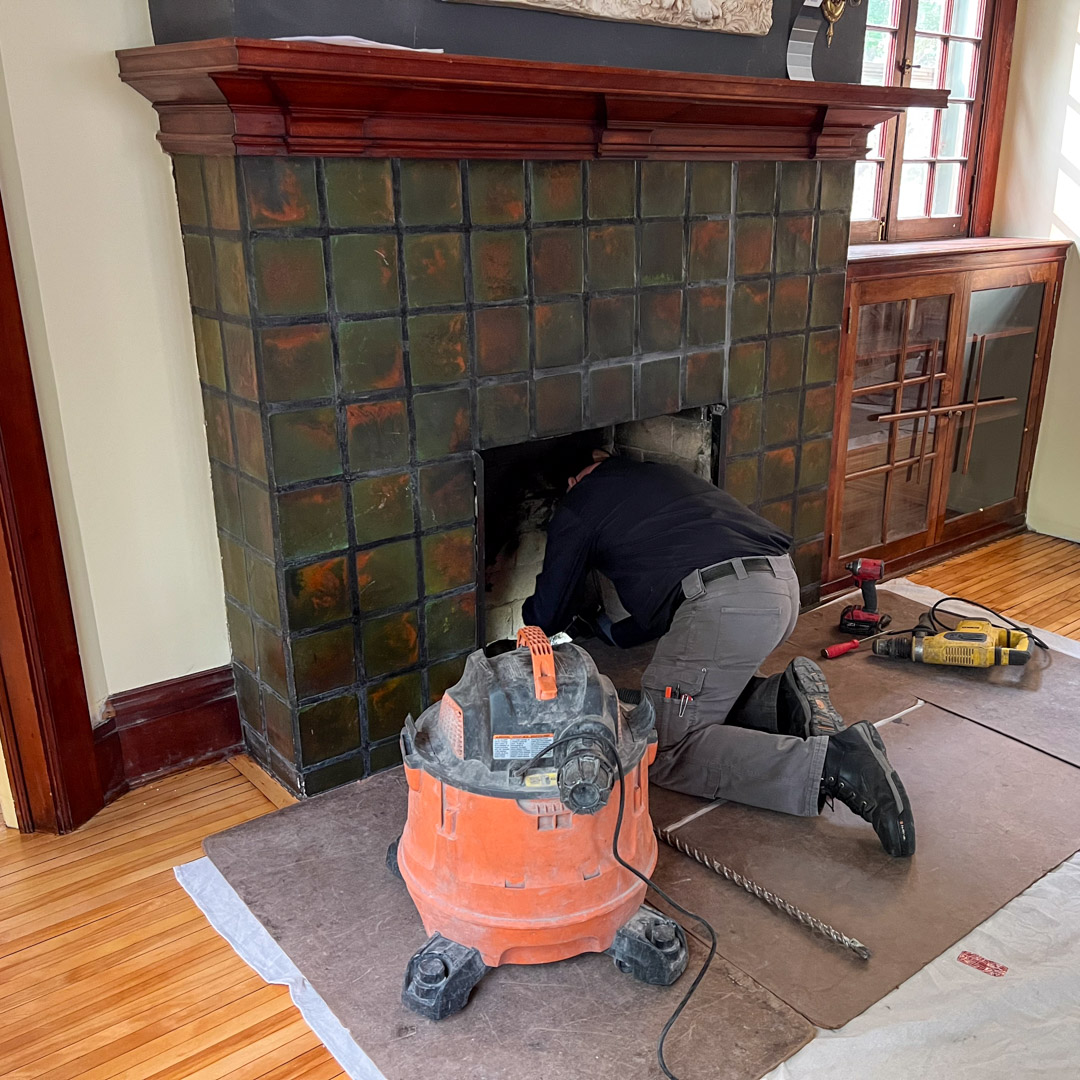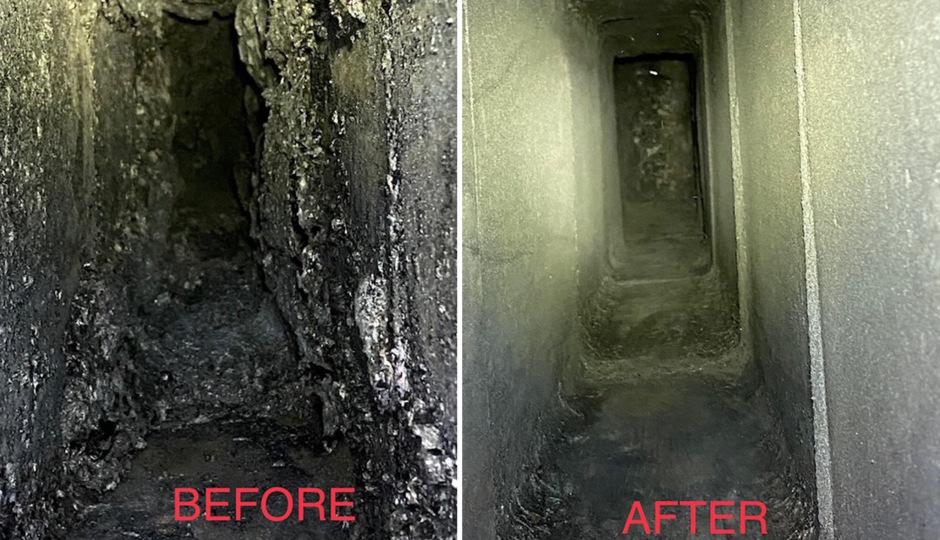Do It Yourself Chimney Maintenance San Jose: Step-by-Step Guide for Homeowners
Do It Yourself Chimney Maintenance San Jose: Step-by-Step Guide for Homeowners
Blog Article
Specialist Tips for Effective Chimney Maintenance You Need to Know
Chimneys serve as vital components in several homes, offering heat and comfort. From the importance of regular assessments to risk-free operational methods, a detailed technique to smokeshaft upkeep is vital.
Relevance of Normal Inspections
Normal inspections of chimneys are essential for guaranteeing their safety and security and capability. Smokeshafts play a vital function in venting out harmful gases and preserving appropriate air flow in a home. In time, creosote buildup, debris, and structural damage can take place within the chimney, posturing significant dangers such as smokeshaft fires or carbon monoxide gas leakages.
During a smokeshaft inspection, trained experts analyze the problem of the smokeshaft, trying to find any signs of damages, clogs, or wear and tear. They likewise inspect the integrity of the flue, chimney liner, and smokeshaft cap to make certain whatever remains in proper working order. By identifying and addressing issues early, costly fixings or prospective dangers can be stayed clear of.
Normal evaluations not only aid in keeping the safety of the smokeshaft but likewise contribute to its total efficiency. A tidy and well-kept chimney operates much more successfully, making certain correct ventilation and decreasing the risk of interior air contamination. As a result, organizing yearly chimney inspections is an aggressive measure that home owners can take to safeguard their building and enjoyed ones.
Cleansing Techniques and Frequency
Keeping the security and efficiency of a smokeshaft includes not only normal examinations but additionally carrying out proper cleaning methods and identifying the optimum frequency for cleansing. Chimneys should be cleansed by a professional smokeshaft move at least yearly, even if they are not regularly made use of. However, if the chimney is made use of consistently, specifically with wood-burning ranges or fire places, it may call for more regular cleansings to stop the build-up of creosote, a highly flammable material that can result in smokeshaft fires.
Home owners must never neglect smokeshaft cleansing, as it is necessary for keeping a secure and useful chimney system. Routine cleanings not just minimize the danger of smokeshaft fires but additionally boost the smokeshaft's overall efficiency and longevity.
Resolving Smokeshaft Leaks

When dealing with chimney leakages, complete examination and timely fixings are crucial to stop water damage and preserve the structural stability of the chimney. Leaks in a chimney can lead to severe concerns such as mold and mildew growth, damage of the chimney framework, and even possible fire threats. To properly address chimney leakages, begin by evaluating see this site the chimney cap, crown, blinking, and masonry for any type of indications of damages or wear. Chimney caps need to be securely in area to avoid water from entering, while the crown and flashing should be undamaged and appropriately secured. Any fractures or spaces in the masonry need to be repaired quickly to stop water infiltration. Furthermore, take into consideration waterproofing the smokeshaft to give an added layer of security against wetness. Regular maintenance and assessments can assist attend to and spot chimney leaks early, saving you from costly repair work and making sure the safety and security and durability of your smokeshaft.
Comprehending Creosote Accumulation
To recognize the potential threats of creosote build-up in smokeshafts, it is necessary to recognize its development process and influence on chimney performance. Creosote is a brown or black tar-like material that collects inside smokeshaft systems when wood or nonrenewable fuel sources are burned. As smoke rises via the smokeshaft, it cools down and condenses, resulting in the development of creosote, which follows the smokeshaft wall surfaces.

Routine chimney examinations and cleanings by a specialist chimney sweeper are crucial in avoiding creosote accumulation and guaranteeing the secure procedure of your chimney system.
Safe Operation Practices
Applying correct safety and security procedures is essential for the safe and effective operation of chimney systems. Always make certain that the smokeshaft is expertly evaluated and cleaned up frequently to eliminate any type of creosote resource buildup, which can lead to chimney fires.
In addition, see to it to only shed skilled wood in your fireplace, as wet or environment-friendly wood can produce more creosote and cause dangerous smokeshaft obstructions. Never ever leave a fire ignored and constantly make sure the fire is completely extinguished before going to bed or leaving the home. By adhering to these risk-free procedure techniques, you can enjoy a cozy and cozy fire while making certain the security of your home and enjoyed ones.
Verdict
Finally, maintaining your chimney is essential for guaranteeing its safety and security and effectiveness. Routine examinations, correct cleansing strategies, addressing leaks, taking care of creosote accumulation, and following secure operation methods are vital facets of chimney maintenance. By remaining on top of these tasks, you can prevent prospective dangers and extend the lifespan of your smokeshaft. It is essential to focus on smokeshaft upkeep to maintain your home safe and warm during the chillier months.
Over time, creosote build-up, particles, and structural damages can happen within the chimney, positioning severe dangers such as chimney fires or carbon monoxide leakages.
If the smokeshaft is utilized regularly, specifically with wood-burning ranges or fire places, it might require more frequent cleansings to avoid the build-up of creosote, a very combustible substance that can lead to smokeshaft fires. (Chimney Maintenance San Jose)
To comprehend the possible hazards of creosote build-up in why not try these out chimneys, it is essential to acknowledge its development process and influence on smokeshaft performance. As smoke rises with the smokeshaft, it condenses and cools down, leading to the development of creosote, which sticks to the smokeshaft wall surfaces.
Always make sure that the smokeshaft is skillfully inspected and cleaned routinely to remove any type of creosote build-up, which can lead to smokeshaft fires.
Report this page